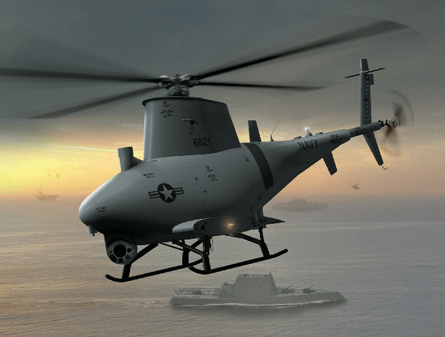US Army training and doctrine staff have completed a new analysis that reconsiders the service's commitment to the Northrop Grumman MQ-8B Fire Scout unmanned helicopter.
The analysis compares the MQ-8B with the AAI RQ-7C Shadow, a proposed upgrade of the fixed-wing RQ-7B, says Col Robert Sova, training and doctrine capabilities manager for unmanned aircraft systems.
 |
|---|
Northrop Grumman Fire Scout |
The completed analysis recommends a course of action, but the results remain undisclosed, Sova told the UAS Symposium of the Army Aviation Association of America (Quad-A) on 10 December.
"There has not been a decision yet in terms of the outcome," Sova said.
The analysis raises fresh doubts about the Fire Scout programme's future only two months after the army proposed to expand the programme.
In October, the army released a new plan to replace the cancelled Future Combat Systems with 73 modernised brigade combat teams (BCT). Each brigade under the new plan would be equipped with the Class IV UAS, which the army selected Northrop in 2003 to deliver the MQ-8B.
Northrop has delivered eight MQ-8Bs to the army, but they remain parked at Northrop's facility in Moss Point, Mississippi. The aircraft are scheduled to enter service in 2013.
Sova says army officials have questioned the need for the Fire Scout programme given its expense: "Because these things are expensive, we need a comparison between something you already have. With this capability that was a part of the FCS Class IV BCT."
Army officials are considering making several changes to its existing acquisitions for UAS. For example, the army now acknowledges a need for a UAS similar to the Boeing/Insitu Scan Eagle, which has already been deployed by the navy, marines and special operations.
With Shadows operated at the brigade level and hand-launched systems pushed down to companies and platoons, the small tactical UAS would fill a gap at the battalion level, says Col Gregory Gonzalez, UAS programme manager.
The army also has laid out a strategy for acquiring the ability to haul cargo without putting flightcrews at risk. Army officials have a far-term plan to convert manned cargo and utility helicopters to optionally manned systems.
"Not only will we see it," Sova says. "I think we should do it because we're leveraging the investment we've already made."
Source: Flight International



















